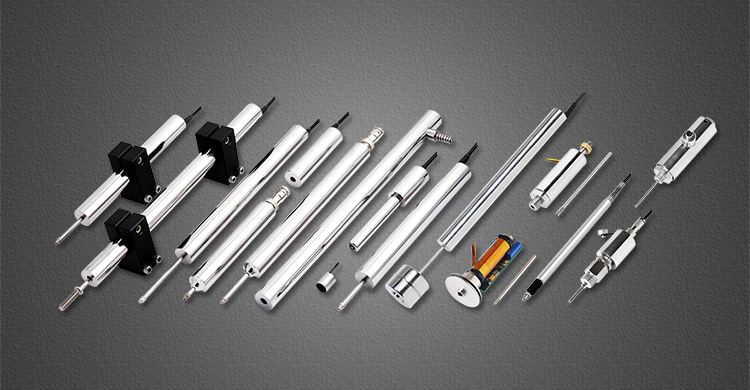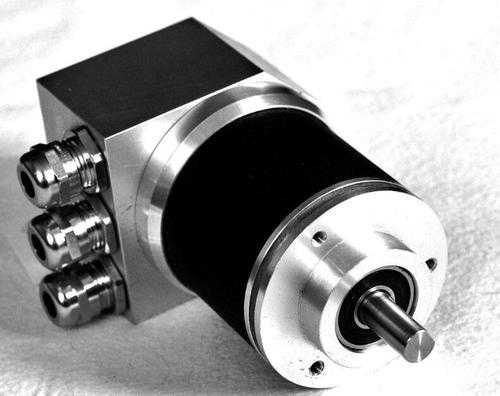Pipe bending machine technology is now widely used in electric power construction, highway and railway construction, boilers, bridges, ships, furniture, home appliances, and decoration industries. Its technology is also constantly developing with the progress of modern technology. Today we will talk about the selection of displacement sensors and rotary encoders for pipe bending machines.
1. Selection of displacement sensor

In the cnc pipe bending machine measurement and control system, it needs to be applied to displacement sensors in multiple places to measure and detect the relevant displacements, such as the actual travel displacement of the Y-axis feed, hydraulic control of the advance and retreat tool position, etc. Therefore, the choice of displacement sensor is particularly important. In the design of this system, the Hall-type displacement sensor is mainly selected, and the Hall sensor will be briefly introduced below.
In order to improve the sensitivity of the Hall element, it is required that Ph is large and d is small. Because the Rh of the semiconductor is much larger than that of the metal, the Hall element is usually made of semiconductor. It can be seen from the above formula that for a given Hall element (that is, Ph is constant), if the control current is kept unchanged, the magnitude of the output voltage Uh can be changed only by changing the magnitude of the magnetic induction B. The Hall displacement sensor changes Lr by changing the relative position of the permanent magnet and the Hall element, that is, changing the size of B, thereby achieving the conversion between displacement and output voltage.
2. Selection of rotary encoder

The rotary encoder of the hydraulic pipe bender is a device used to measure the rotational speed. The photoelectric rotary encoder can convert the mechanical displacements such as the angular displacement and angular velocity of the output shaft into corresponding electrical pulses through digital conversion (REP) through photoelectric conversion. It is divided into single output and dual output. The technical parameters mainly include the number of pulses per revolution (dozens to thousands), and the power supply voltage. Single output means that the output of the rotary encoder is a set of pulses, while the dual output rotary encoder outputs two sets of pulses with a 90 ° phase difference between A / B. These two sets of pulses can not only measure the speed, but also determine the direction of rotation. The encoder can be divided into incremental pulse encoder: SPC and absolute pulse encoder: APC according to the signal principle. Both are generally applied to detection elements of speed control or position control systems. The rotary encoder has a photoelectric code wheel with an axis in the center, which has a ring-shaped, dark engraved line, and is read by photoelectric transmitting and receiving devices. Obtain four sets of sine wave signals and combine them into A, B, C, and D. Each sine wave is 90 degrees out of phase (relative to a cycle of 360 degrees). Up, the stable signal can be enhanced; another Z-phase pulse is output per revolution to represent the zero reference position.
Since the phases of A and B are 90 degrees apart, the forward and reverse rotation of the encoder can be discriminated by comparing phase A or phase B. Through the zero position pulse, the zero reference position of the encoder can be obtained. The encoder has 5 leads, 3 of which are pulse output lines, 1 is a COM terminal line, and 1 is a power line (OC gate output type). The power supply of the encoder can be an external power supply, or it can directly use the DC24V power supply of the PLC. The “-” end of the power supply should be connected to the COM end of the encoder, and the “+” should be connected to the power end of the encoder. The COM terminal of the encoder is connected to the PLC input COM terminal, and the two-phase pulse output lines of A, B, and Z are directly connected to the PLC input terminal. A and B are pulses with a phase difference of 90 degrees. One pulse is usually used as the basis for the zero point. Pay attention to the response time of the PLC input when connecting. The rotary encoder also has a shielded wire, and the shielded wire should be grounded to improve anti-interference. Resolution-The number of pass or dark lines provided by the encoder per 360 degrees of rotation is called resolution, also known as resolution indexing, or how many lines are directly called, generally 5 to 10000 lines per revolution.
Incremental and absolute rotary encoders Incremental encoders directly use the photoelectric conversion principle to output three sets of square wave pulses A, B, and Z phase; the phase difference between the two groups of pulses of A and B is 9O. When the rotary shaft of the incremental encoder rotates, there is a corresponding pulse output, and the starting point of its count can be set arbitrarily, which can realize multi-cycle infinite accumulation and measurement. One revolution of the encoder shaft will output a fixed pulse, the number of pulses is determined by the number of encoder grating lines. When you need to increase the resolution, you can use the A and B signals with a phase difference of 90 degrees to double the frequency or replace the high-resolution encoder. There are many engraved lines on the absolute encoder code wheel, and each engraved line is by 2 lines, 4 lines, 8 lines, and 16 lines. . . Arrangement, in this way, at each position of the encoder, by reading the pass and dark of each reticle, a set of unique binary codes from the zeroth power of 2 to the n-1th power of 2 (Gray Code), this is called an n-bit absolute encoder. Such an encoder is determined by the mechanical position of the code wheel, it is not affected by power outages and interference.
The absolute encoder determines the uniqueness of each position by the mechanical position. It does not need to remember, it does not need to find a reference point, and it does not need to keep counting. When it is necessary to know the position, when to read its position. In this way, the anti-interference characteristics of the encoder and the reliability of the data are greatly improved. In the actual production process, considering that the absolute encoder cost is much greater than the incremental encoder, the CNC pipe bending machine measurement and control system uses an incremental rotary encoder, and the resolution used is selected as 3600 according to production practice. Line to meet the accuracy requirement of the system's minimum resolution of ± 0.1 °. The measurement and control system uses HEDSS (Hide) rotary encoder, ISC4406 series, the output pulse is 3600P / R, 5L.




 English
English français
français русский
русский español
español português
português العربية
العربية Türkçe
Türkçe ไทย
ไทย Tiếng việt
Tiếng việt chinese
chinese




